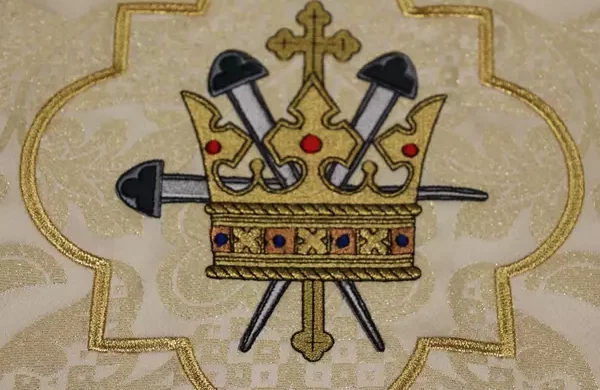
The countless hours of restoration for the Crown of Glory design took place during the season of Lent. And in the end, The King of King’s design shines forth with joy at the dawning of Christmas and Easter morn.
Like this:
Like Loading...
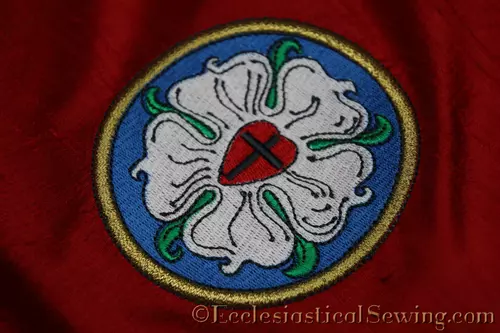
The Luther Rose Liturgical Brocade Fabric, borne from collaboration and inspiration, symbolizes the 500th Anniversary of the Reformation. Designed with Patonce Cross and Luther Rose Emblem motifs, the fabric captures a distinctly Lutheran essence. The design with the guidance of skilled partners, including Edward Riojas, who added a vine motif. The result is a richly symbolic fabric, a testament to the dedication and support of those involved in its creation.
Like this:
Like Loading...
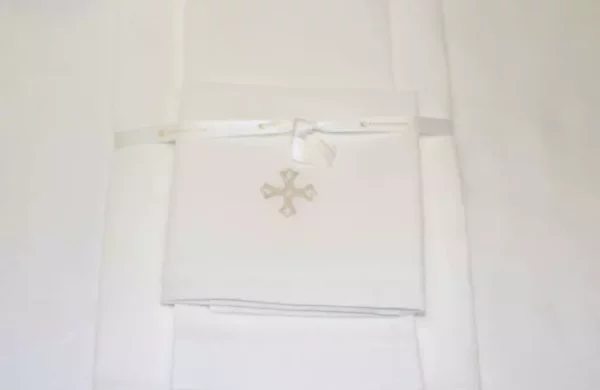
Each small altar linen is meticulously handcrafted for attention to detail. We start by pre-shrinking and pressing the linen carefully. Cutting is done along the thread for a straight edge. Hemming follows with precise folding and stitching, using delicate thread for quality. This ensures high-quality altar linens.
Like this:
Like Loading...
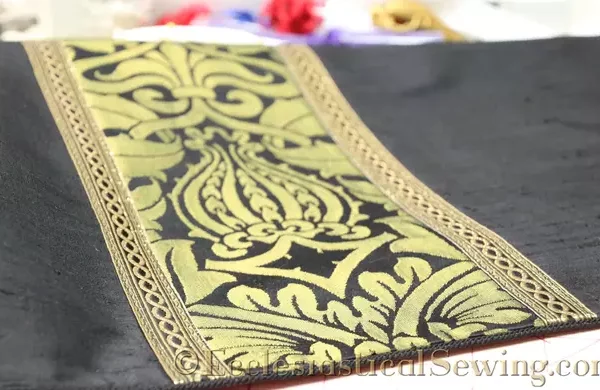
The Saint Augustine Chalice Veil is made from Silk Dupioni, which is a great option for black vestments used on Good Friday. Silk Dupioni is a good fabric choice for church vestment making because it looks rich, has a natural sheen, and a depth of color. Combining a solid fabric with a patterned orphrey allows the vestment to be visible from more than the first few rows of church pews.
Like this:
Like Loading...
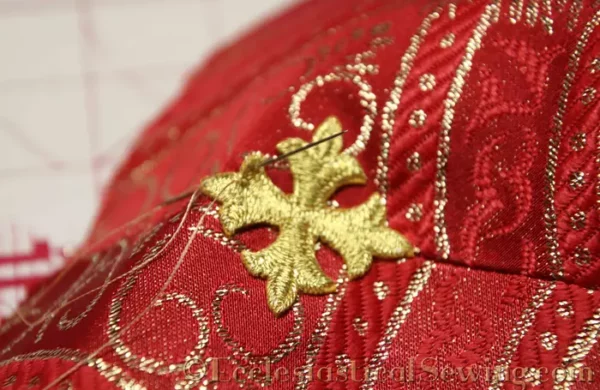
To learn more about making a pastor or clergy stole, we offer a 20-plus-page instruction booklet with photos of our pastoral and priest stole patterns for those interested in making their own clergy stoles.
Like this:
Like Loading...
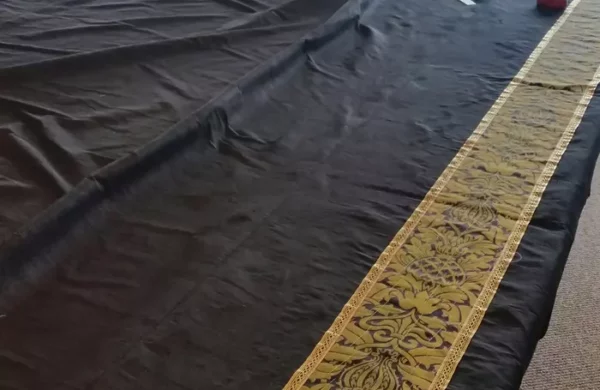
Any guesses? What is 88″ wide by 124″ long? We will use it at our local church for Good Friday… It is so big that we are spending Saturday… Read more Any guesses? →
Like this:
Like Loading...
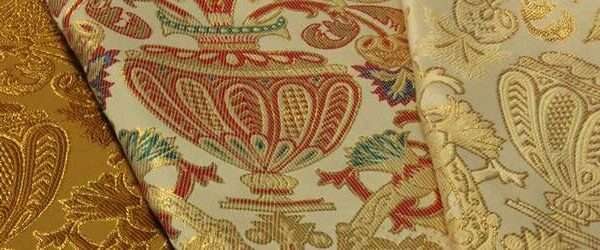
First project, a set commemorating the 500th Anniversary of the Lutheran Church. There will be Luther’s Seal, along with the Six Chief Parts, and the VDMA Cross – a device used by the Hanseatic League back in Luther’s day. The four letters of that cross are shorthand for “The Word of the Lord endures forever”.
Like this:
Like Loading...
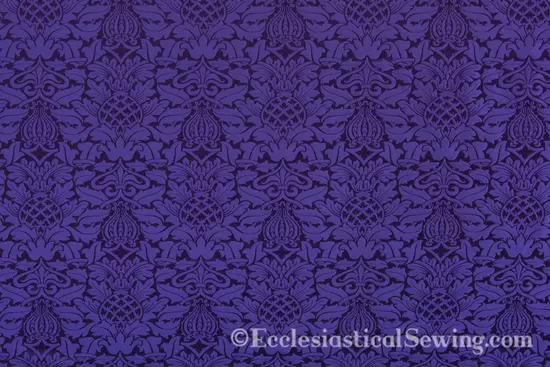
Ecclesiastical Sewing introduces new designs in the Pastor or Priest Stole Collection for Lent and Advent. The Pope Gregory Violet Silk Dupioni Priest Stole, designed with gold trim and cross detail, is a featured stole. Available in various versions, with orphrey bands and tassels. Additionally, the Rose Stole, designed for Laetare and Gaudete Sundays, adds a special to the Penitential Seasons. The St. Ambrose Pastor or Priest Stole in rich violet hues. These stoles offer bespoke quality at an affordable price.
Like this:
Like Loading...
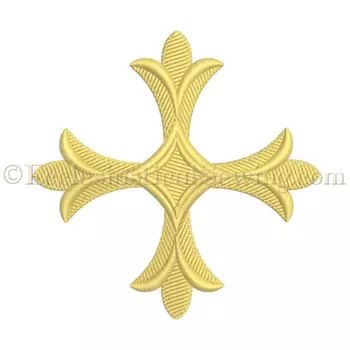
Ecclesiastical Sewing has created new designs for church vestments and paraments including patterns for things like altar hangings and special embroidery for pastors’ stoles. One of the design, called Luther Rose Gold Spray, has a vintage look with a special emblem. Another design, Luther Rose Quatrefoil, comes in different sizes for things like stoles and chasubles. There’s also a design for letters, like the ones used in liturgical embroidery, called Reformation VDMA. Another favorite is the Patonce Cross, available in various sizes.
Like this:
Like Loading...
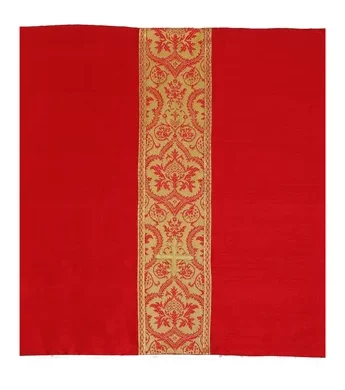
To test a pattern for a Chalice Veil at Ecclesiastical Sewing, red silk dupioni was used for the face fabric, satin for the lining, and Evesham brocade for the orphrey band, trimmed with Saint Benet trim. The process involved measuring, cutting, and adding the orphrey band and trim. Basting the trim before sewing helped ensure it stayed straight. After completing the orphrey band, it was stitched to the silk, a cross was applied with an iron, and the lining was hand-stitched. The final result is a beautiful Chalice Veil in the Saint Gregory Collection of Vestments.
Like this:
Like Loading...
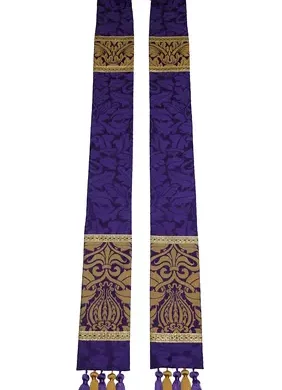
Ecclesiastical Sewing Pastoral Stole Collection. The styles include St. Gregory Silk Dupioni, St. Ambrose, St. Michael, St. Jerome, and St. Augustine. Each stole featuring unique orphrey bands, a gold cross at the neckline, and tassels along the bottom edges. Additionally, there is an Alpha-Omega stole in ivory. These pastoral stoles are now ready for purchase on our website, and we’re working on creating seasonally colored stoles for each style.
Like this:
Like Loading...
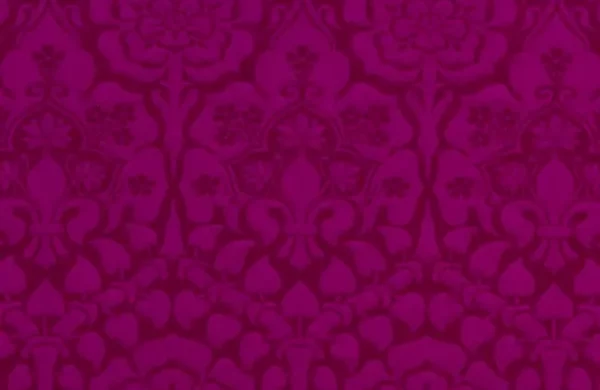
Liturgical vestments, like stoles and chasubles, need fabric with both drape and firmness to hold their shapes. Fabrics must be carefully chosen for the right weight and body. M. Perkins and Sons, with over a century of experience, create Ecclesiastical Fabrics designed specifically for making church vestments. They prioritize yarn selection, ensuring the correct spin, loft, and thickness to achieve durability and proper form.
Like this:
Like Loading...
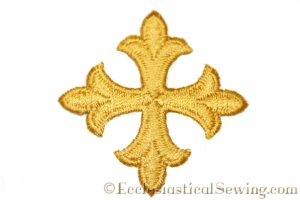
Ecclesiastical Sewing sells small iron-on cross appliques. There are a variety of colors and sizes. These little crosses can be used on the neckline of a stole; they can be used to decorate the front of a stole; or they could be used on chalice veils, burses, or other church vestments.
Like this:
Like Loading...
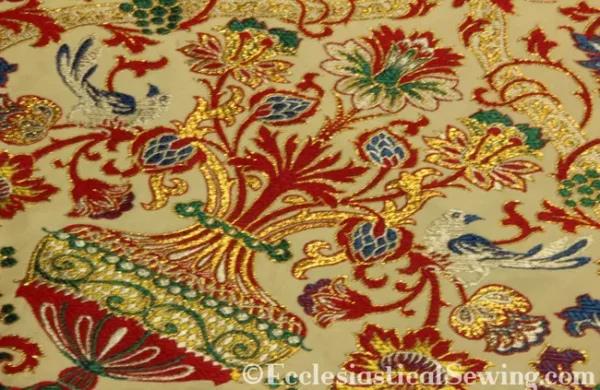
These fabrics often showcase medium to large patterns, like the Aragon Tapestry with its Jardinière design or Brocatelles such as Wakefield and Evesham. They are versatile for creating entire vestments or using cut pieces as accents. The size and scale offer endless possibilities, and shimmering threads woven into intricate designs enhance the beauty of the final vestments.
Like this:
Like Loading...

Happy New Year From Ecclesiastical Sewing With Praise and Thanksgiving to everyone who follows along here at Ecclesiastical Sewing, and to a few special people who have been a blessing… Read more Happy New Year From Ecclesiastical Sewing →
Like this:
Like Loading...

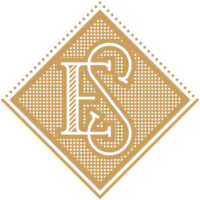














You must be logged in to post a comment.